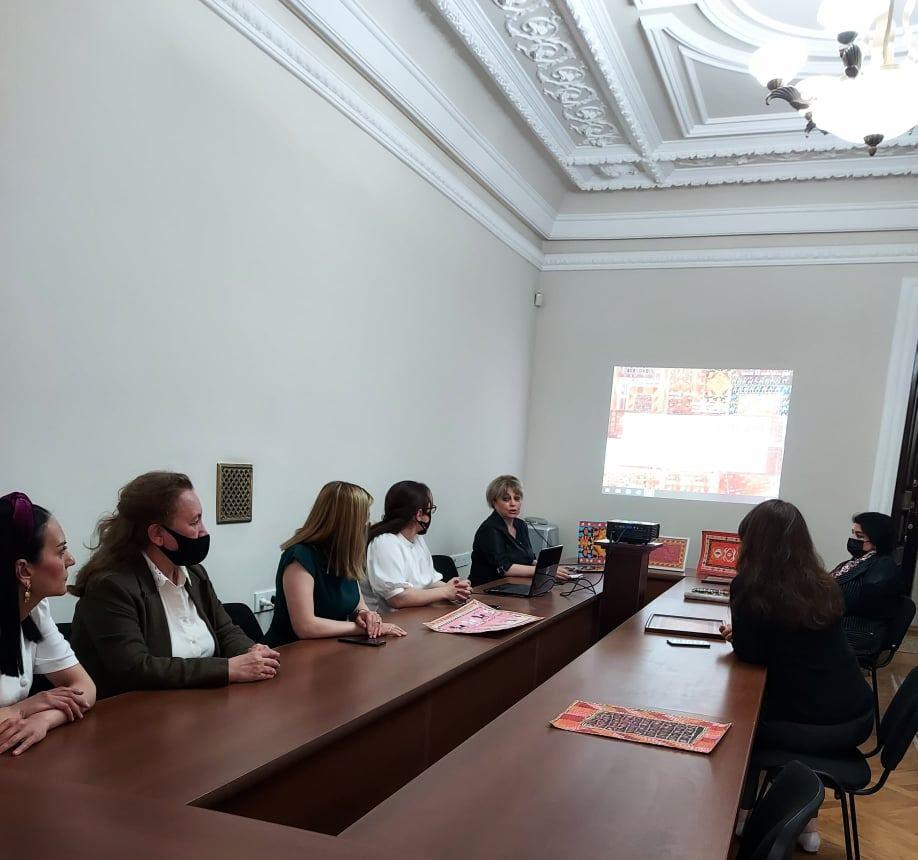National History Museum displays stunning Karabakh carpets [PHOTO]
![National History Museum displays stunning Karabakh carpets [PHOTO]](https://www.azernews.az/media/2021/05/18/carpeteventttt12.jpg)
By Laman Ismayilova
The National History Museum has displayed stunning Karabakh carpets as part of "Museum exhibits through the colorful world of students". The event was timed to the International Museum Day, celebrated on May 18.
Since 1997, International Museum Day (IMD) has been celebrated worldwide every year on May 18 .
The day promotes cultural exchange and cooperation between peoples and is celebrated each year following different themes. This year's theme is The Future of Museums: Recover and Reimagine.
International Museum Day 2021 will focus on rethinking the museum of the future to meet the challenges of the present.
The event was attended by teachers and students of the Seyid Jafar Pishevari Republican Humanitarian Gymnasium and the Technical and Humanitarian Lyceum,who were shown the images of Karabakh carpets.
In their remarks, Head of the Department of Scientific and Mass Work and Education Farida Shamsi, Head of the Scientific Fund Department of Ethnography , Doctor of Philosophy in History, associate professor Gulzade Abdulova and Head of the Museum of Fine Materials, Doctor of Philosophy in Architecture, associate professor Nardana Yusifova provided insight into Azerbaijan's carpet weaving art.
The speakers noted that the main goal of the project is to provide students with new knowledge of history that will help them choose their future profession. The event aroused great interest among the students.
Karabakh carpets are distinguished from other national carpet schools by their artistic and technological production and their size.
This carpet school is famous for its pileless carpets, including shadda, zili, verni, kilim and palas products. Karabakh carpets are characterized by bright colors and vegetative motives.
There are 33 compositions of Karabakh carpets. These carpets are produced in the towns Malibeyli, Muradkhanli, Dashbulag, Jabrayil, Horadiz in Karabakh in the mountainous part of Karabakh.
With its colorful patterns and manufacturing technique, Zangazur and Nakhchivan are also included in Karabakh carpet school.
These carpet compositions feature classical patterns of Karabakh carpet-weaving school, including "Aran”, "Bagchadaguller", "Balıg", "Buynuz", "Barda", "Bahmanli", "Garabag", "Goja", "Gasımushagı", "Lambaran", "Mugan", "Talısh", "Lampa", "Malıbayli ", "Khangarvand", "Khanlıg", "Khantirma", "Chalabi", and "Shabalıdbuta".
With its rich colors, this carpet school comprises all undertones of the nature of Karabakh. Besides various plants, these colors are gained from different kinds of insects. The most popular insect from which red color is produced is scale insect or red worm.
--
Follow us on Twitter @AzerNewsAz
Here we are to serve you with news right now. It does not cost much, but worth your attention.
Choose to support open, independent, quality journalism and subscribe on a monthly basis.
By subscribing to our online newspaper, you can have full digital access to all news, analysis, and much more.
You can also follow AzerNEWS on Twitter @AzerNewsAz or Facebook @AzerNewsNewspaper
Thank you!





